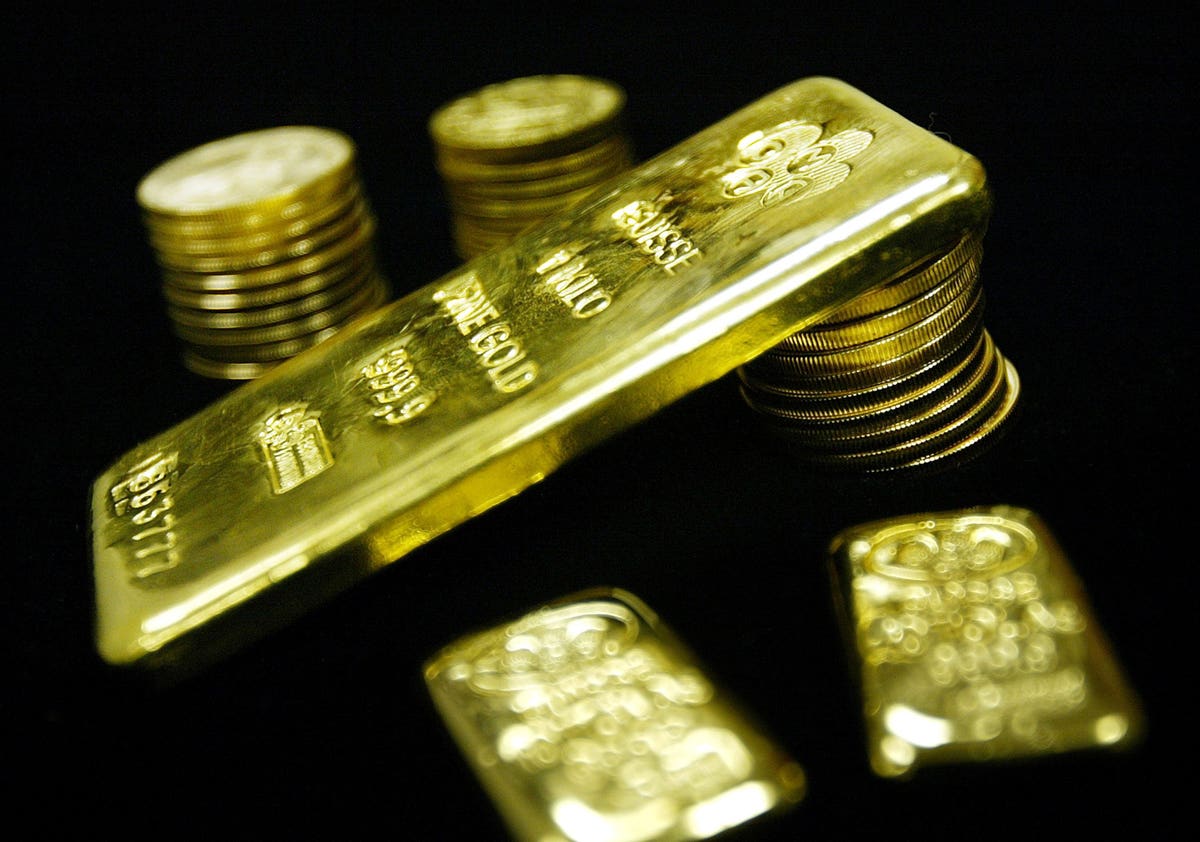Gold prices took a tumble over the last month. But experts say there’s reason to be optimistic for a bounce back in short order.
The price of gold recently fetched $1,872 per troy ounce down 3.7% from $1,944 on September 1, according to data from the London Bullion Market Association. The SPDR Gold Shares exchange-traded fund, which tracks the price of gold, fell similarly.
So why is gold dropping? “ It’s been primarily investor and financial Market concerns over interest rates and interest rate activity,” says Jeff Christian, managing partner at New York-based commodities consulting firm CPM Group in a recent video.
Higher interest rates, or worries about inter rates going higher, tends to make gold investments less attractive as the commodity doesn’t pay dividends or coupons and instead costs money to store.
Bullion’s downward price move came in tandem with investors dumping some of their gold holdings. In the month through September 27 (the latest data) total outflows from the SPDR Gold Shares ETF totaled more than $912 million, according to data from financial research company VettaFi. The SPDR Gold Shares ETF is the biggest such fund in the world.
But the truth about the drop shows it may have largely been based on unfounded worries about the future of the economy and certain aspects of the financial markets.
For instance, the worries over rising interest rates may be a needless concern.
Christians notes that the Federal Reserve’s own expectations shows falling interest rates within a few months. “They have interest rates pretty much at their peak right now,” he says.
In addition, current interest rates are still low compared to where they were before the 2008 financial crisis, he says.
Putting this in context, a six or seven percent mortgage before the Great Recession was seen as a good deal.
Some people are also concerned that the U.S. will dip into a recession next year. It may happen, Christian says.
But recessions are often mere statistical blips. Just look at the year 2000 when the economy was deemed to be in recession but no overall contraction occurred, according to government data.
- “I’ll say it again if you look at the oh the real economy supply and demand for goods and services what you’ve seen is a lot more strength than a lot of people imagined and expected,” Christian says.
Where the higher interest rates have likely taken an economic toll has been in specific sectors of the economy such as housing and automobile manufacturing.
“Those are two very important sectors of the economy but they’re also very interest rate sensitive, Christian says.
He notes that if one delves into both sectors you find the troubles are more related to imbalances between supply and demand. Christian says:
- “More and more people say I don’t even want to own a car I’ll rent a car I can do ride sharing,”“If I do want a car I want a smaller car I don’t want to pay 40, 50, or sixty thousand, I’d like to pay 25 or 30 or thirty five thousand for a car.”
However, the automakers have an incentive to supply higher margin vehicles such as pickup trucks and Sport Utility Vehicles as they have higher prices with much bigger profit margins, he says.
Similar is true in housing with the housing industry still wants to make mcmansions because they have higher margins, he says. However, there is more demand for smaller houses and apartments, he says.
In other words, the worries about the economy cratering due to higher interest rates likely are overblown.
And that’s also likely why gold prices will bounce back.
Read the full article here











Leave a Reply